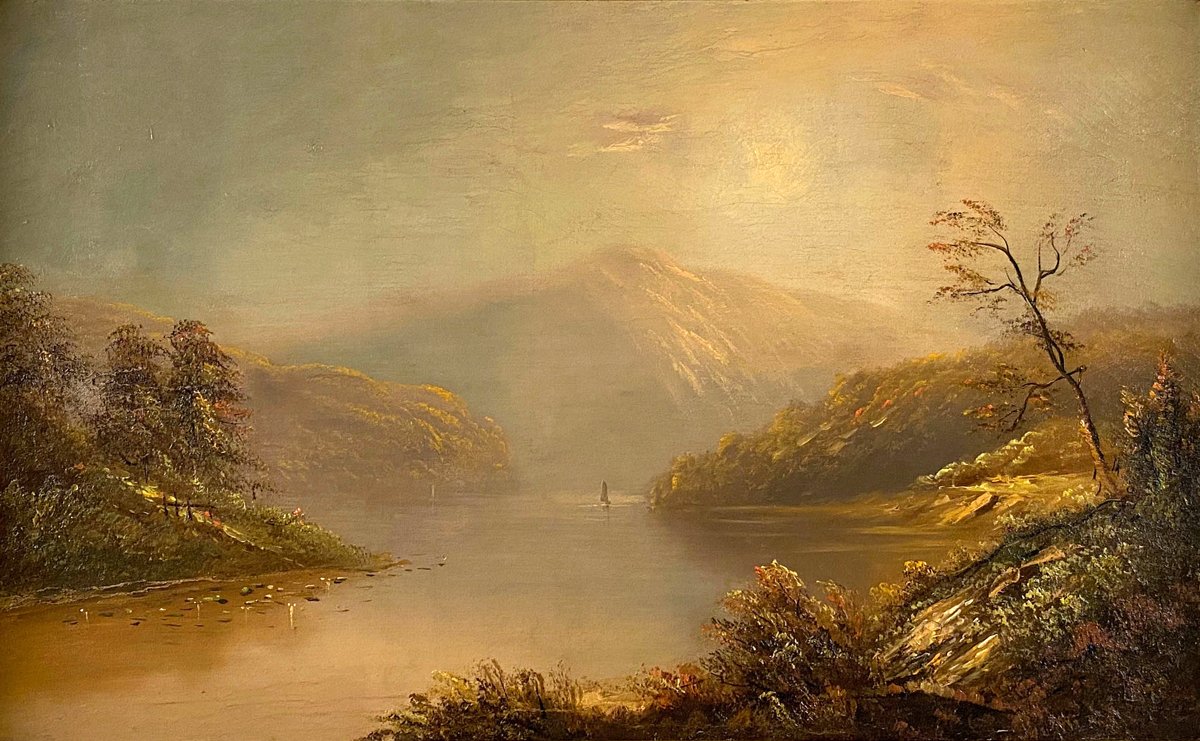Paintings
Hudson River School
American, 19th CenturyA View along the Hudson River, in the manner of Jasper Francis Cropsey
Oil on canvas22 by 36 in. W/frame 30 by 44 in.
Provenance:
Private Collection, New York
Alexander Avenard Collection, Ma.
Le Trianon Fine Art & Antiques, Sheffield Ma.
See Artist Bio below.
Hudson River School
American, 19th CenturyHudson River School paintings reflect three themes of America in the 19th century: discovery, exploration, and settlement. The paintings also depict the American landscape as a pastoral setting, where human beings and nature coexist peacefully. Hudson River School landscapes are characterized by their realistic, detailed, and sometimes idealized portrayal of nature, often juxtaposing peaceful agriculture and the remaining wilderness, which was fast disappearing from the Hudson Valley just as it was coming to be appreciated for its qualities of ruggedness and sublimity. In general, Hudson River School artists believed that nature in the form of the American landscape was an ineffable manifestation of God, though the artists varied in the depth of their religious conviction. They took as their inspiration such European masters as Claude Lorrain, John Constable and J. M. W. Turner. Their reverence for America’s natural beauty was shared with contemporary American writers such as Henry David Thoreau and Ralph Waldo Emerson. Several painters, such as Albert Bierstadt, were members of the Düsseldorf school of painting.
While the elements of the paintings were rendered realistically, many of the scenes were composed as a synthesis of multiple scenes or natural images observed by the artists. In gathering the visual data for their paintings, the artists would travel to extraordinary and extreme environments, which generally had conditions that would not permit extended painting at the site. During these expeditions, the artists recorded sketches and memories, returning to their studios to paint the finished works later.







